Resources
School level
Type
Topic
- Citizen Science (29)
- Eco challenges (5)
- Endangered species (29)
- Extreme weather (16)
- Indigenous Sea Country (34)
- Marine debris (16)
- Reef connectivity and biodiversity (97)
- Reef Management (44)
- Reef Posters (27)
- Reef Threats (37)
- STEM Units (34)
- Sustainability (26)
- Virtual Learning Experiences (12)
- Water quality (17)
- World heritage (57)
Date
- September 2025 (3)
- September 2016 (5)
- October 2025 (6)
- October 2023 (1)
- November 2025 (1)
- November 2021 (6)
- November 2013 (1)
- March 2020 (1)
- March 2015 (1)
- June 2025 (42)
- January 2016 (1)
- January 2013 (1)
- January 2012 (1)
- January 2011 (1)
- January 2010 (1)
- January 2009 (1)
- January 2008 (1)
- January 2007 (1)
- December 2025 (2)
- December 2021 (1)
- August 2025 (4)
- August 2019 (1)
- April 2020 (1)
Search results
214 result(s) found, displaying 61 to 70
Worksheet
Structural adaptations
1. Use the information on page 2 to help you complete the table below as you explore animal shapes, habitats and special features. Explore animal shapes, habitats and special features.
An animal’s mouth and body shape, as well as the habitat it lives in can give us clues as to what it feeds upon. Many marine organisms also possess defence mechanisms to prevent them from becoming food themselves.
2. Use the information below to assist you in completing the table on the previous page.
1. Use the information on page 2 to help you complete the table below as you explore animal shapes, habitats and special features. Explore animal shapes, habitats and special features.
An animal’s mouth and body shape, as well as the habitat it lives in can give us clues as to what it feeds upon. Many marine organisms also possess defence mechanisms to prevent them from becoming food themselves.
2. Use the information below to assist you in completing the table on the previous page.
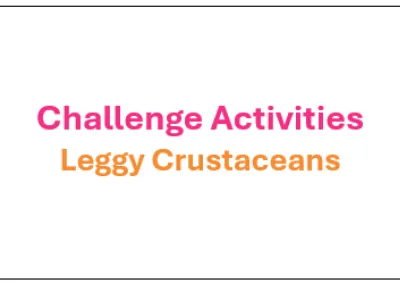
Worksheet
Structural adaptations
Crustaceans have adapted their jointed, armoured legs so that they can be used not just for walking over sand and coral, but for swimming, feeling, catching and grasping food, holding bunches of eggs and even for shooting backwards.
1. Using the letters in this table, colour in the legs as indicated and find out uses of the different legs on each of these crustaceans. Some legs may be used for more than one action.
Crustaceans have adapted their jointed, armoured legs so that they can be used not just for walking over sand and coral, but for swimming, feeling, catching and grasping food, holding bunches of eggs and even for shooting backwards.
1. Using the letters in this table, colour in the legs as indicated and find out uses of the different legs on each of these crustaceans. Some legs may be used for more than one action.

Worksheet
Design the ultimate reef creature
1. Design the ultimate reef creature animal species name.
2. Draw your creature!
a) Would an animal with a shark's body, jellyfish tentacles and stonefish camouflage be the ultimate survivor on a coral reef?
b) Using what you already know, and the information on page 2, create your own Ultimate Reef Creature. Make sure to name your creation and list it’s adaptations in the boxes below, then draw what your creature would look like.
c) Pick your favourite reef creature and tick the adaptations they possess from the list below.
1. Design the ultimate reef creature animal species name.
2. Draw your creature!
a) Would an animal with a shark's body, jellyfish tentacles and stonefish camouflage be the ultimate survivor on a coral reef?
b) Using what you already know, and the information on page 2, create your own Ultimate Reef Creature. Make sure to name your creation and list it’s adaptations in the boxes below, then draw what your creature would look like.
c) Pick your favourite reef creature and tick the adaptations they possess from the list below.

Worksheet
Adaptations
1. How do sea creatures breathe underwater? Most animals use special organs called gills.
2. Circle the animals below if you think they have gills.
For the animals that you didn’t circle, investigate how they are able to survive life underwater.
1. How do sea creatures breathe underwater? Most animals use special organs called gills.
2. Circle the animals below if you think they have gills.
For the animals that you didn’t circle, investigate how they are able to survive life underwater.
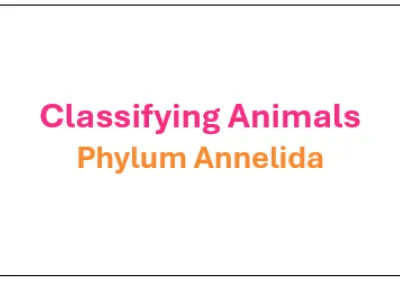
Worksheet
Classification - Phylum Annelida
Annelids are also known as segmented worms. They are extremely variable in form and lifestyle and live in all ecosystems on Earth.
1. List four animals that belong to the phylum Annelida.
2. The name ‘Polychaete’ (pronounced ‘polly-keet’) comes from the Greek words “poly” and “chaeta”. What do these names mean?
3. Using the key below, label the features of the polychaete.
Annelids are also known as segmented worms. They are extremely variable in form and lifestyle and live in all ecosystems on Earth.
1. List four animals that belong to the phylum Annelida.
2. The name ‘Polychaete’ (pronounced ‘polly-keet’) comes from the Greek words “poly” and “chaeta”. What do these names mean?
3. Using the key below, label the features of the polychaete.

Worksheet
Classification - Phylum Arthropoda
1. List some animals that belong to this phylum.
2. Identify the key characteristics of animals in this phylum.
3. Describe what an exoskeleton is.
1. List some animals that belong to this phylum.
2. Identify the key characteristics of animals in this phylum.
3. Describe what an exoskeleton is.
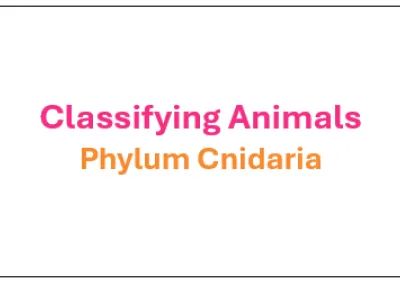
Worksheet
Classification - Phylum Cnidaria
1. Name three animals that belong to the phylum Cnidaria.
2. Identify the key characteristics of Cnidarians.
3. Describe what nematocysts are used for.
1. Name three animals that belong to the phylum Cnidaria.
2. Identify the key characteristics of Cnidarians.
3. Describe what nematocysts are used for.
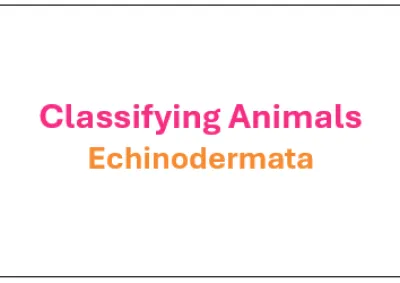
Worksheet
Classification - Phylum Echinodermata
1. List the five (5) main classes (groups) of animals in this phylum.
2. Identify the key characteristics of animals in this phylum.
3. Describe papulae and explain what they are used for.
4. Describe a madreporite and explain what it is used for.
1. List the five (5) main classes (groups) of animals in this phylum.
2. Identify the key characteristics of animals in this phylum.
3. Describe papulae and explain what they are used for.
4. Describe a madreporite and explain what it is used for.
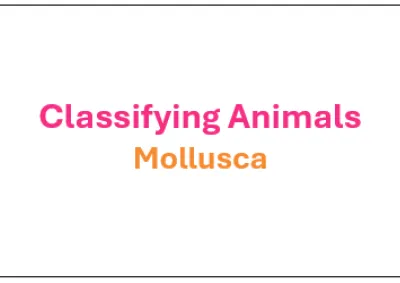
Worksheet
Classification - Phylum Mollusca
1. List some of the animals that belong in this phylum.
2. Identify the key characteristics of animals in this phylum.
3. Describe what a radula is and where it is found.
1. List some of the animals that belong in this phylum.
2. Identify the key characteristics of animals in this phylum.
3. Describe what a radula is and where it is found.
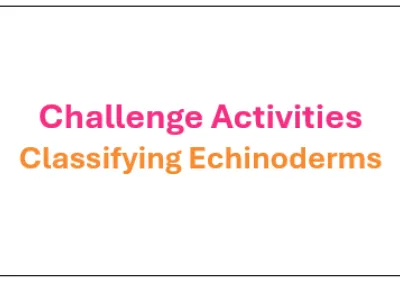
Worksheet
Classification Challenge Sheet Echinoderms
1. What makes them different? SeaStar, sea cucumbers and sea urchins are all grouped together because they have characteristics in common, even though each animal looks very different to the others.
2. List three characteristics that they all have in common.
3. Dichotomous keys are used by scientists to correctly identify species. Use the key below to identify the three types of echinoderms in the pictures below.
1. What makes them different? SeaStar, sea cucumbers and sea urchins are all grouped together because they have characteristics in common, even though each animal looks very different to the others.
2. List three characteristics that they all have in common.
3. Dichotomous keys are used by scientists to correctly identify species. Use the key below to identify the three types of echinoderms in the pictures below.



